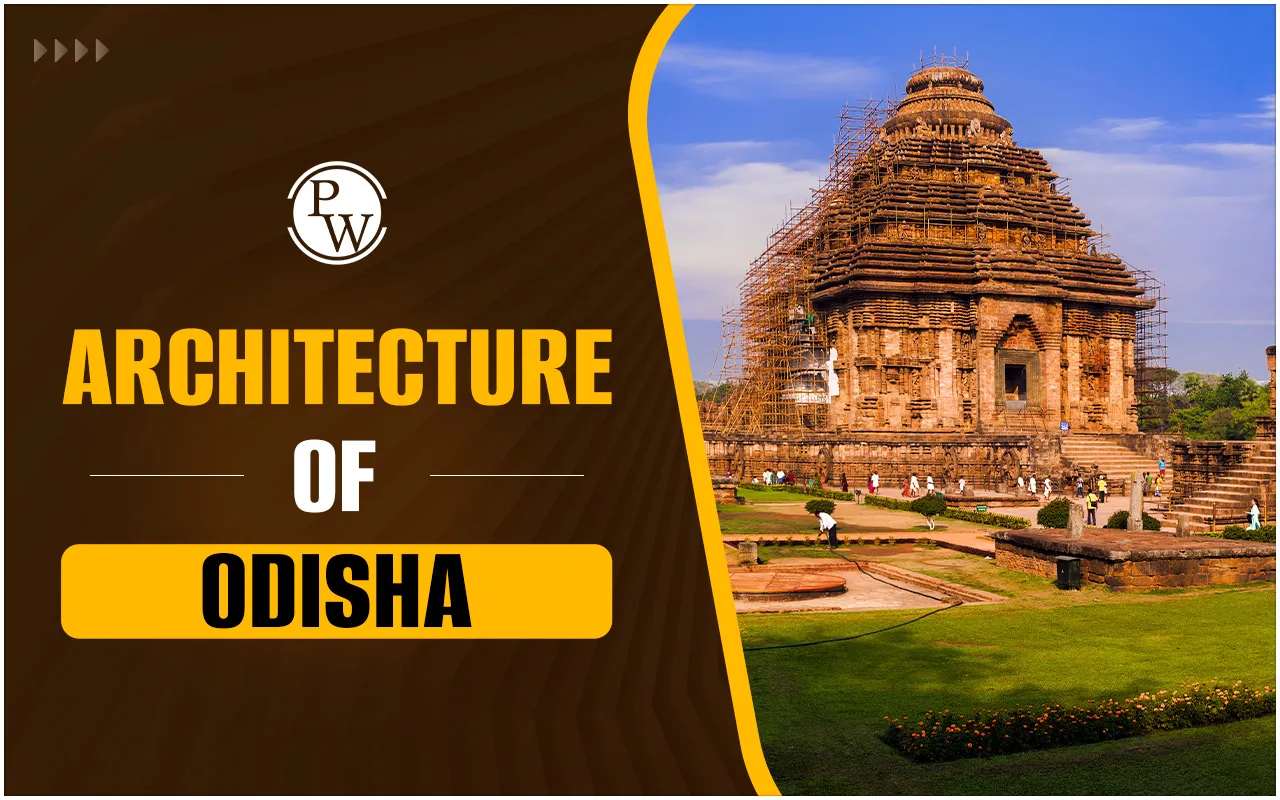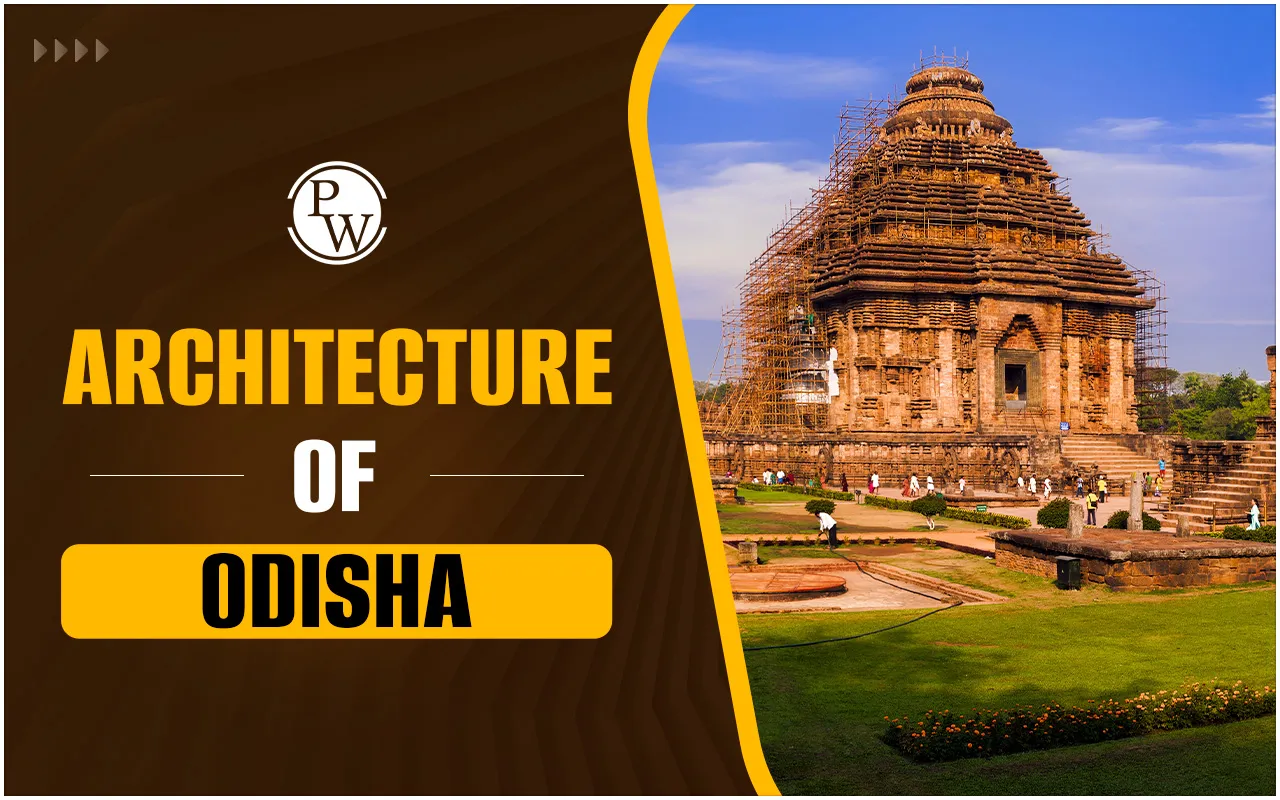

Architecture of Odisha: Odisha, located on the eastern coast of India, is a land rich in cultural heritage and architectural brilliance. Known as Kalinga in ancient times, the state is celebrated for its unique architectural style, which has captivated historians, architects, and tourists alike. The Architecture of Odisha is a testament to the region's artistic finesse, spiritual depth, and historical significance. This article delves into the intricate details of Odisha's architectural marvels, exploring its temples, caves, stupas, and modern developments.
Architecture of Odisha
The Architecture of Odisha is a mesmerizing blend of art, spirituality, and history, prominently reflected in its iconic Kalinga style of temple architecture. Known for its distinct Rekha Deula, Pidha Deula, and Khakhara Deula styles, Odisha's temples like the Sun Temple at Konark and Jagannath Temple in Puri showcase intricate carvings and grand designs. This architectural legacy extends beyond temples to include ancient Jain caves, Buddhist stupas, and modern urban developments, making Odisha a treasure trove of India's cultural heritage.
Also read: Soils in Odisha
The Kalinga Style of Temple Architecture
The Architecture of Odisha is most famously represented by its temples, which belong to the Kalinga style—a sub-school of the Nagara tradition of Hindu temple architecture. This style flourished between the 6th and 13th centuries under the patronage of various dynasties such as the Somavamshis and Ganga rulers.
Key Features of Kalinga Architecture
-
Rekha Deula: Characterized by a curvilinear spire (shikhara) rising above the sanctum sanctorum. Examples include the Lingaraja Temple in Bhubaneswar and Jagannath Temple in Puri.
-
Pidha Deula: Featuring a stepped pyramid-like structure, often used for assembly halls or mandapas. The Mukhasala at Konark Sun Temple is a prime example.
-
Khakhara Deula: Recognizable by its rectangular shape and barrel-shaped roof, typically associated with goddess temples like Vaital Deula in Bhubaneswar.
-
Intricate Carvings: The exteriors are adorned with detailed sculptures depicting mythological stories, celestial beings, animals, and floral motifs.
Also read: Airports in Odisha
Some Iconic Temples in Odisha
Some of the most iconic temples in Odisha, such as the Jagannath Temple in Puri, the Sun Temple in Konark, and the Lingaraja Temple in Bhubaneswar, showcase the grandeur of Kalinga architecture
1. Lingaraja Temple (Bhubaneswar)
-
A masterpiece of Rekha Deula architecture.
-
Dedicated to Lord Shiva.
-
Features a towering 180-foot shikhara adorned with intricate carvings.
2. Jagannath Temple (Puri)
-
One of the Char Dham pilgrimage sites.
-
A blend of Rekha Deula and Pidha Deula styles.
-
Known for its massive compound and annual Rath Yatra festival.
3. Konark Sun Temple
-
A UNESCO World Heritage Site.
-
Designed as a colossal chariot with intricately carved wheels and horses.
-
An outstanding example of Pidha Deula architecture.
4. Vaital Deula (Bhubaneswar)
-
A Khakhara Deula temple dedicated to Goddess Chamunda.
-
Notable for its tantric influences and barrel-vaulted roof.
Also read: Famous Festivals of Odisha
Cave Architecture of Odisha
Odisha also boasts remarkable examples of rock-cut architecture from Jainism and Buddhism:
-
Udayagiri and Khandagiri Caves
Built during the reign of King Kharavela in the 2nd century BCE, the Udayagiri and Khandagiri Caves are a remarkable blend of natural and man-made architecture. Situated on two adjacent hills near Bhubaneswar, these caves served as residential quarters for Jain monks, offering them a serene environment for meditation. The caves feature intricate carvings depicting royal processions, animals, and religious motifs, reflecting the artistic and spiritual ethos of the era. Among the most notable caves is the double-storied Rani Gumpha, which showcases exquisite reliefs and inscriptions that provide valuable insights into the history and culture of ancient Odisha.
-
Dhauligiri Stupa
The Dhauli Shanti Stupa, also known as the Peace Pagoda, is a significant Buddhist monument located atop Dhauli Hills, near the Daya River, about 8 km from Bhubaneswar. Built in 1972 as a collaborative effort between the Kalinga Nippon Sangha and the Odisha Government, it commemorates Emperor Ashoka's transformation after the Kalinga War. The bloodshed of the war profoundly impacted Ashoka, leading him to embrace Buddhism and propagate peace.
The stupa features four majestic Buddha statues in various postures, intricate carvings depicting episodes from Buddha's life, and a rock-cut elephant considered one of Odisha's oldest Buddhist sculptures. This serene site also offers panoramic views of lush green landscapes and stands as a symbol of peace and enlightenment.
Also read: Folk Songs of Odisha
Architecture of Odisha FAQs
What is the significance of Odisha's architecture?
What is the most famous architectural structure in Odisha?
What is the Kalinga style of architecture?
What are the major temple types in Odisha?












